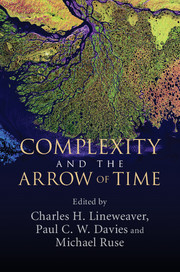1 - What is complexity? Is it increasing?
from Part I - Introduction
Published online by Cambridge University Press: 05 July 2013
Summary
One of the principal objects of theoretical research is to find the point of view from which the subject appears in the greatest simplicity.
(Gibbs, 1881)Most people don't need to be persuaded that the physical world is bewilderingly complex. Everywhere we look, from molecules to clusters of galaxies, we see layer upon layer of complex structures and complex processes. The success of the scientific enterprise over the last 300 years largely stems from the assumption that beneath the surface complexity of the universe lies an elegant mathematical simplicity. The spectacular progress in particle and atomic physics, for example, comes from neglecting the complexity of materials and focusing on their relatively simple components. Similarly, the amazing advances in cosmology mostly ignore the complications of galactic structure and treat the universe in a simplified, averaged-out, approximation. Such simplified treatments, though they have carried us far, sooner or later confront the stark reality that many everyday phenomena are formidably complex and cannot be captured by traditional reductionist approaches. The most obvious and important example is biology. The techniques of particle physics or cosmology fail utterly to describe the nature and origin of biological complexity. Darwinian evolution gives us an understanding of how biological complexity arose, but is less capable of providing a general principle of why it arises. “Survival of the fittest” is not necessarily “survival of the most complex”.
- Type
- Chapter
- Information
- Complexity and the Arrow of Time , pp. 3 - 16Publisher: Cambridge University PressPrint publication year: 2013
References
- 10
- Cited by



